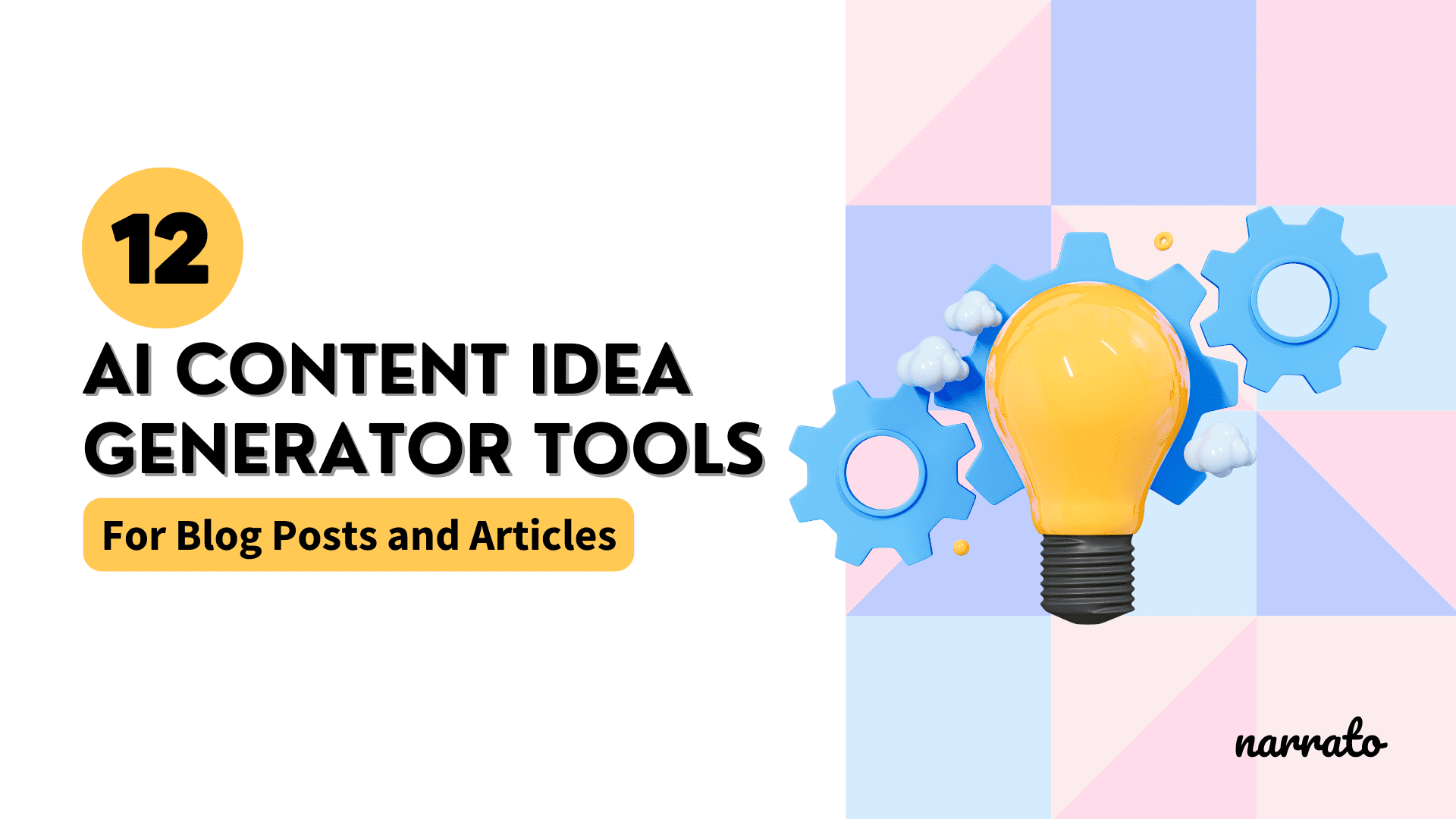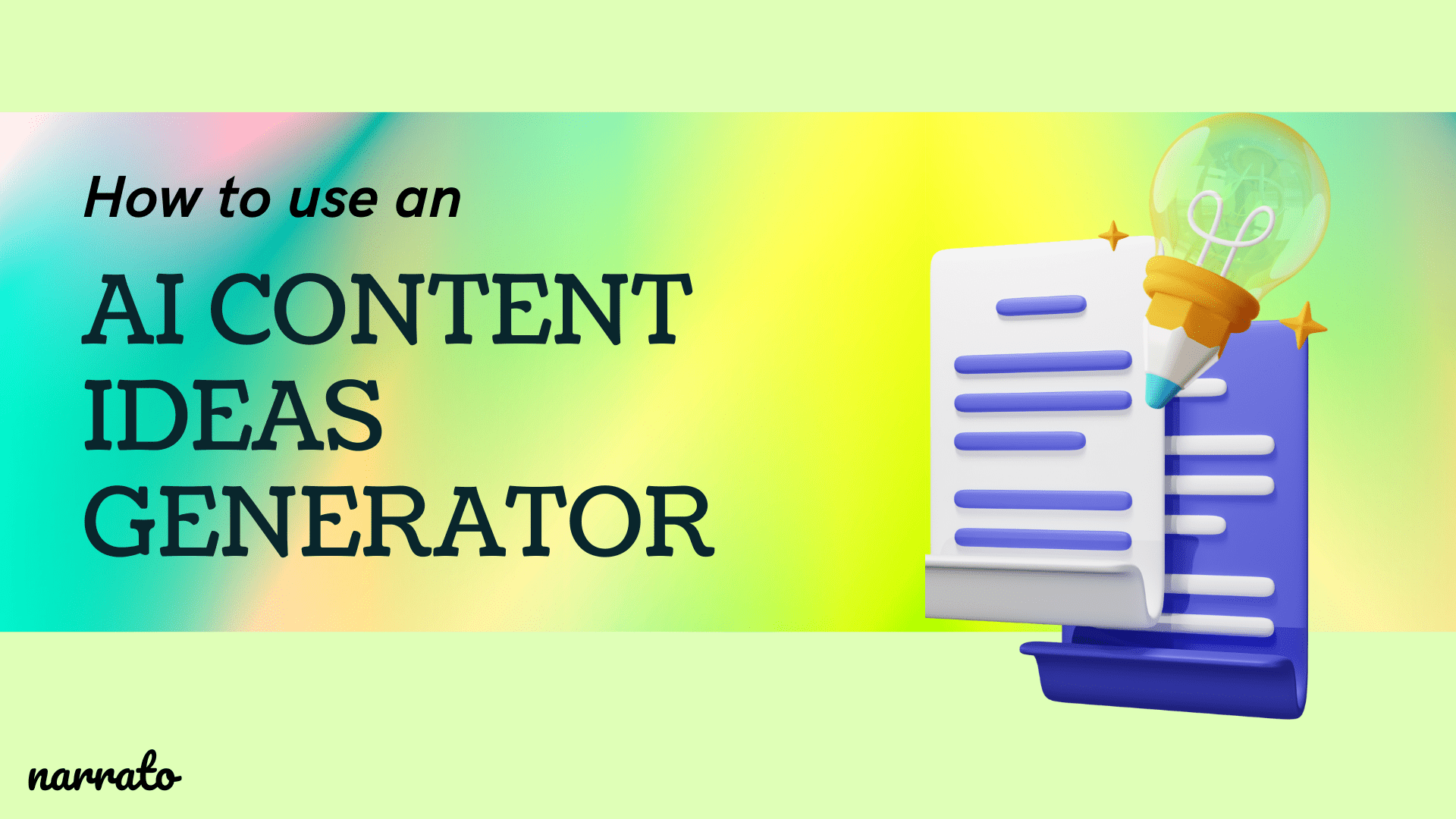Unleashing the Idea Machine: How ai Content Idea Generators Are Revolutionizing SEO
In the ever-evolving world of search engine optimization, staying ahead of the curve means a constant influx of fresh, relevant, and high-quality content. But let’s be real, staring at a blank screen, desperately trying to conjure up an original angle for your next 2000-word article, can feel like trying to squeeze water from a stone. That’s where AI content idea generators step in, not as a replacement for human creativity, but as a powerful sidekick, an idea machine ready to supercharge your SEO efforts.
Forget those endless brainstorming sessions that leave you with more coffee jitters than actual ideas. AI content idea generators are changing the game by providing a dynamic, data-driven approach to content ideation, helping you churn out those long, valuable articles that Google absolutely loves.
The Content Conundrum: Why Fresh Ideas Matter for SEO

Before we dive into the nitty-gritty of AI generators, let’s quickly touch on why a steady stream of unique content ideas is so crucial for SEO.
Firstly, Google’s algorithms are constantly looking for fresh, relevant content. Sites that consistently publish new, in-depth articles are seen as authoritative and active, which can significantly boost their search rankings. Think of it like a library that’s always adding new, interesting books; people are more likely to visit and spend time there.
Secondly, long-form content, especially articles exceeding 2000 words, tends to rank better. Why? Because it allows you to delve deep into a topic, cover multiple facets, answer a wider range of user questions, and naturally incorporate more relevant keywords and phrases. This comprehensive approach signals to Google that your content is a valuable resource, providing a holistic understanding of the subject.
Thirdly, the more unique and valuable content you have, the more opportunities you create for backlinks – those crucial votes of confidence from other websites that tell Google your content is trustworthy and important.

Finally, in an increasingly competitive online landscape, simply rehashing what everyone else is saying won’t cut it. You need to stand out, offer fresh perspectives, and address new angles. This is where the “idea” part of content creation becomes paramount.
Enter the AI: Your New Brainstorming Buddy
So, how exactly do AI content idea generators fit into this picture? Imagine having a tireless research assistant who can instantly analyze vast amounts of data, understand current trends, and identify gaps in existing content – all to give you a personalized list of content ideas. That’s essentially what these AI tools do.
They’re not just spitting out random words; they’re leveraging sophisticated algorithms and machine learning to understand the nuances of your niche, your target audience’s search intent, and what’s already performing well (or not so well) in the search results.

How Do These Smarty-Pants Tools Work?
At their core, AI content idea generators work by taking your input – usually a broad topic, a few keywords, or even a description of your business – and then cross-referencing that with massive datasets of online information. Think of it as a super-powered brain that’s constantly learning from the internet.
Here’s a simplified breakdown of the magic behind the scenes:
Keyword Analysis: You feed it a seed keyword, say “sustainable living.” The AI then expands on that, identifying related keywords, long-tail variations (like “affordable sustainable living tips for students”), and even questions people are asking around that topic. This goes beyond basic keyword research tools by understanding the context of these keywords.
The SEO Superpowers of AI Content Ideas
Okay, so they’re smart. But how do these smart ideas actually translate into better SEO for your long articles?
1. Laser-Focused Keyword Targeting: AI generators don’t just give you keywords; they give you idea-infused keywords. Instead of just “SEO tips,” you might get “The Ultimate Guide to On-Page SEO for Beginners: 2025 Edition.” This naturally leads to content that is more targeted and more likely to rank for specific, high-intent queries. Because these articles are long, you have ample opportunity to weave in a rich tapestry of related keywords and phrases naturally, signaling to Google that you’re covering the topic exhaustively.
2. Addressing Search Intent with Precision: Google’s number one goal is to provide users with the most relevant answers to their queries. AI-generated ideas often come with an inherent understanding of search intent. If someone is searching for “how to fix a leaky tap,” they’re looking for a step-by-step guide, not a history of plumbing. AI can suggest ideas that directly address these informational, navigational, or transactional intents, making your content more helpful and, therefore, more likely to rank. For 2000+ word articles, this means you can address multiple facets of the user’s intent within one comprehensive piece.
3. Uncovering Untapped Niches: Sometimes, the best way to rank is to go where your competitors aren’t. AI can unearth obscure but high-potential long-tail keywords or niche topics that human brainstorming might miss. These less competitive areas can be goldmines for ranking, especially for new websites or those trying to break into crowded markets. A long article on a niche topic can establish you as the definitive authority.
4. Structured Content for Readability (and Rankings): While the AI generates the ideas, it often influences the structure of your article. Many tools provide not just topics but also potential headings and subheadings. This pre-baked structure is a godsend for long articles. It ensures your content is logical, easy to scan, and well-organized, which are all critical factors for both user experience and SEO. Google favors well-structured content because it’s easier for their crawlers to understand and index. Even without images, a strong heading structure (H1, H2, H3, etc.) breaks up the text and improves readability significantly.
5. Fueling Content Calendars Consistently: The biggest challenge for many content creators is consistency. Writer’s block can derail even the best intentions. AI content idea generators provide an endless stream of inspiration, allowing you to fill your content calendar for weeks or even months in advance. This consistent publishing schedule is a huge win for SEO, as it keeps your site fresh in Google’s eyes.
6. Boosting “People Also Ask” and Featured Snippet Potential: AI tools often identify common questions related to your main topic. By incorporating these questions and their direct answers into your long articles, you significantly increase your chances of appearing in Google’s “People Also Ask” section or even snagging a coveted featured snippet. These prominent positions can drive a massive amount of organic traffic.
7. Saving Time for Deeper Research and Writing: Let’s face it, ideation can be a time sink. By offloading this initial brainstorming to AI, you free up valuable time to focus on what truly matters for a 2000-word article: in-depth research, factual accuracy, unique insights, and crafting compelling prose. This focus on quality is what ultimately drives long-term SEO success.
Using AI for Your 2000-Word Masterpieces (Without Images!)
Here’s how to effectively leverage AI content idea generators for your image-free, long-form WordPress articles:
1. Start Broad, Then Refine: Begin by giving the AI a broad topic or industry. For example, if you’re in the fitness niche, start with “home workouts” or “nutrition for athletes.”
2. Look for “Ultimate Guides” or “Everything You Need to Know”: AI often suggests ideas that naturally lend themselves to long-form content. Keywords like “ultimate guide,” “complete breakdown,” “deep dive,” or “everything you need to know about X” are strong indicators.
3. Identify Sub-Topics and FAQs: Pay close attention to ideas that branch off into multiple sub-topics or address a series of related questions. These are perfect for building out those comprehensive 2000+ word articles. You can use these as your H2s and H3s.
4. Embrace the “Why,” “How,” and “What If”: AI is great at generating problem-solution oriented ideas. Look for prompts that lead to articles explaining why something is important, how to do something, or exploring what if scenarios. These naturally require detailed explanations.
5. Consider Different Angles/Perspectives: If the AI gives you a similar idea to something already out there, ask it to generate ideas from a different angle or for a specific audience. For example, “AI content idea generator for small businesses” versus “AI content idea generator for enterprise companies.”
6. Develop a Strong Outline (AI Can Help!): Once you have your core idea, use the AI to help you build out a detailed outline. Many AI tools can suggest headings and subheadings. This is critical for long articles, especially without images, as it helps readers navigate the content and keeps them engaged.
7. Focus on Depth and Detail: Remember, your goal is to provide immense value. For each point in your outline, aim to provide comprehensive explanations, examples, and actionable insights. Don’t skim the surface.
8. Vary Sentence Structure and Vocabulary: To keep readers engaged without images, mix up your sentence lengths and use a rich vocabulary. Avoid repetitive phrasing.
9. Use Bold Text and Bullet Points Generously: Since you’re not using images to break up the text, strategically use bold text to highlight key takeaways and bullet points or numbered lists to present information in an easy-to-digest format. This improves readability dramatically.
10. Internal and External Linking: Weave in relevant internal links to other helpful articles on your site. This keeps users on your site longer and helps distribute “link juice” (SEO value) across your content. Also, include external links to authoritative sources where appropriate to back up your claims.
11. Craft Compelling Introductions and Conclusions: Hook your readers in from the start and provide a strong summary and call to action at the end. For long articles, a well-written introduction is even more crucial to convince readers to invest their time.
12. Proofread and Edit Meticulously: Long articles can easily harbor typos and grammatical errors. Give your content a thorough proofread, or better yet, have someone else review it, to ensure it’s polished and professional.
The Human Touch: Still Indispensable
While AI content idea generators are incredibly powerful, they are tools, not replacements for human intelligence and creativity. Here’s where your human touch remains absolutely critical:
Fact-Checking and Accuracy: AI can sometimes “hallucinate” or provide outdated information. Always, always, always fact-check any claims or statistics generated by AI. Your credibility depends on it.
Looking Ahead: The Symbiotic Future of Content
The rise of AI content idea generators isn’t about robots taking over writing. It’s about a symbiotic relationship where AI handles the heavy lifting of idea generation and data analysis, freeing up human creators to focus on the higher-level cognitive tasks: critical thinking, deep research, storytelling, and infusing content with genuine human insight and expertise.
For long-form articles, especially those without images, this partnership is a game-changer. It allows you to produce the comprehensive, well-researched, and keyword-rich content that Google rewards, without the mental fatigue of constantly battling writer’s block. So, embrace the idea machine, let it spark your creativity, and get ready to climb those search rankings with your compelling, in-depth articles. The future of SEO content is here, and it’s a collaboration between human ingenuity and artificial intelligence.

